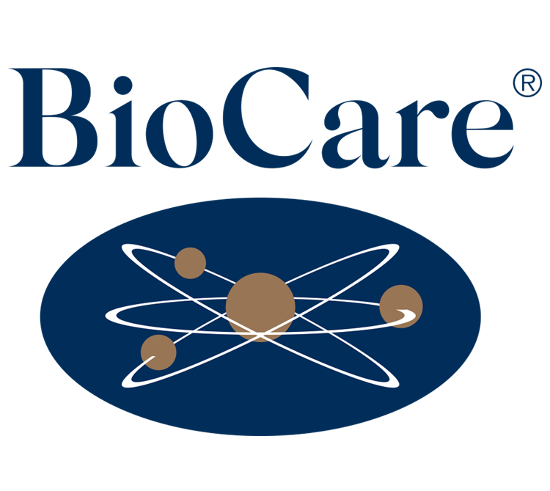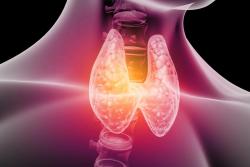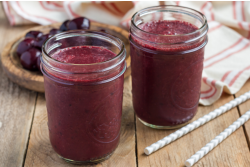Are you confused about multinutrients? Trying to decipher which one would be best for you, or if you actually need one? If chosen well, multinutrients can be an incredibly powerful tool to support many aspects of life, from stress, to immunity, and hormone balance. They can also support different life stages, such as fertility (male and female), pregnancy, and menopause. A carefully formulated complex containing therapeutic doses of nutrients that are easily absorbed and used by the body, is so much more than just a bog standard supplement.
Do you need a multinutrient?
The truth is, most individuals nowadays have an inadequate intake of vitamins and minerals leading to deficiencies.[i] Another key factor to consider is your body’s unique requirements. Think of it as a case of Nutritional Economics - it’s all about supply and demand. If the supply of food is low in nutrient value, or the demand for nutrients is overly high, this can leave us off balance. The reasons for this can include:
- Intensive farming - resulting in depleted soil, reducing the overall nutrient levels within the fruit and vegetables. On comparing the nutrient content of UK soils in 2010 to that of 30 years before, the amount for copper, zinc, and manganese was on average 30% lower.[ii]
- Poor digestive health - for example due to the presence of conditions such as Irritable Bowel Syndrome (IBS) and Colitis, can affect our ability to digest food, and absorb nutrients from it.
- Busy and stressful lifestyle - increasing our nutrient requirements, and increasing our reliance on convenience foods. Stress can deplete many essential nutrients, such as B vitamins and magnesium.
- Dietary restrictions - such as adopting a ‘free from’ or vegan/vegetarian diet, if not done carefully, could be restricting the intake of nutrients, such as vitamin B12,[iii] folate, iron, or zinc.[iv],[v]
- Being overweight increases requirements for vitamins and minerals. If trying to lose weight, insufficiencies in B vitamins, chromium, or iodine, will make it harder as they are all required for metabolism.
- Age - as we get older our efficiency in absorbing and processing nutrients decreases, putting the older population at a potentially higher risk of deficiencies.
- Genetics play a pivotal role in how we utilise the nutrients we ingest. Because of this, some of us have higher needs some nutrients, particularly folate,[vi],[vii] B12,[viii],[ix] and vitamin D.[x]
How do I choose the right multinutrient?
The market can appear saturated with multinutrient options, making it confusing and difficult to choose. Not all multinutrients are created equal, so when looking for a multinutrient, choose wisely and make sure to consider the following attributes:
- Active forms of nutrients – vitamins come in different forms, while minerals are bound to other molecules that act as carriers. The form of each nutrient can greatly impact on the absorption and effectiveness of it. Good examples include iron sulphate versus iron citrate, magnesium oxide vs magnesium citrate, or vitamin D2 vs D3. The latter being the preferred forms due to better absorption and use by the body.
- Methylated – methylation is a process which underpins hundreds of critical body functions including brain function, energy production, detoxification, and immunity. Its optimal functioning is dependent on a good intake of folate and B12, ideally in their most bioavailable forms – methylfolate and methylcobalamin for B12, rather than folic acid or cyanocobalamin used in some multivitamins. Methylfolate has been shown to be 3x better absorbed and used by the body than folic acid.[xi] Up to 50%[xii] of people may have a genetic mutation that makes it hard to utilise folic acid,[xiii],[xiv]therefore, taking a supplement with methylfolate instead can be very beneficial.
- Optimum dose – most high quality supplements contain nutrient levels above the government recommended amount, the Nutrient Reference Value (NRV). The NRV is purely the dose required to avoid deficiency. With a multinutrient, you not only want to prevent a deficiency, you want to surpass it, and actually support and boost your overall health and wellbeing. For a therapeutic product, look out for dosages of around 1000iu of vitamin D3, 25-50mg of most of the B vitamins, and 100-400mcg of methylfolate or B12.
- Personalised – our requirements change throughout each stage of life, from childhood, though to teenage years, adulthood, fertility, and pregnancy and menopause for women. At each stage, we find that our bodies need different levels of nutrients, with requirements differing for both genders.
We can really personalise our multinutrient for more targeted supplementation by keeping an eye out on these key nutrients:
For men’s health:
- Zinc supports healthy testosterone levels, fertility and reproduction. [xv] [xvi]
- Lycopene is a type of carotenoid which is a strong antioxidant and has been shown to be beneficial for prostate health [xvii] and reducing oxidation of fats in the blood, supporting cholesterol balance. [xviii]
- Nettle root inhibits aromatase, which reduces oestrogen and raises testosterone, and inhibits the conversion of testosterone to DHT (dihydrotestosterone), which can cause fatigue, male pattern baldness and prostate inflammation.[xix],[xx]
- Coenzyme Q10 is highly beneficial for energy support, cardiovascular health,[xxi] and blood sugar balance. [xxii] It can also improve sperm quality. [xxiii]
For women in childbearing age:
- Iron - menstruating women require higher levels of iron due to menstrual loss.[xxiv]
- Vitamin B6 supports female hormone balance and has been shown to reduce Premenstrual Syndrome (PMS) symptoms. [xxv]
- Magnesium can also alleviate PMS symptoms, including improving mood and reducing water retention.[xxvi],[xxvii]
- Rosemary is a powerful antioxidant that can support female hormonal levels by increasing the ‘good’ 2 -hydroxy oestrogens, [xxviii],[xxix] and increasing glutathione levels.[xxxix]
- Biotin is essential for growth and maintenance of hair, and can provide support directly from the hair root. Deficiency can result in thinning hair and loss of hair colour.[vi]
During and after menopause:
- Vitamin E protects cells from oxidative stress. This has been proven to reduce some menopausal symptoms, such as hot flushes and night sweats. [xxxi]
- Green tea contains potent antioxidants and may help reduce the risk of certain hormone-related cancers.[xxxii],[xxxiii] It can also help with weight management, and reduce levels of testosterone, glucose, cholesterol, and triglycerides.[xxxiv]
- Bone supportive nutrients such as calcium, magnesium, vitamin D and vitamin K are especially important post-menopause. [xxxv] The drop in oestrogen during this time affects the activity of the cells which build our bones, osteoblasts.
- Lycopene, as well as supporting male health and cholesterol levels, it can also be beneficial during the menopause, acting as an antioxidant to protect breast tissue. [xxxvi]
When considering a multinutrient, make sure you choose the most effective formula that is easily absorbed and used by the body, with the right ingredients to suit your individual needs, age and lifestyle. A multinutrient is a perfect complementary addition to a healthy diet and lifestyle; a great foundation to build upon, and an insurance policy to guarantee that we are getting everything our body needs to perform optimally.
Got a question?
The brand you can talk to:
We have a team of Nutritionists at the end of our advice line, open to you, for product support and advice (5 days a week). 0121 433 8702 or clinicalnutrition@biocare.co.uk.
Not registered for an account with BioCare®?
You can register now to receive up to date news, product information and exclusive offers whether you are a consumer, practitioner or retailer.
References
[i] Department of Health. (2011). Headline results from Years 1 and 2 (combined) of the rolling programme 2008/9 - 2009/10. National Diet and Nutrition Survey.
[ii] Jones DL et al. REVIEW: Nutrient stripping: the global disparity between food security and soil nutrient stocks. Journal of applied ecology. 2013;50(4):851-862.
[iii] Herrmann W et al. Vitamin B-12 status, particularly holotranscobalamin II and methylmalonic acid concentrations, and hyperhomocysteinemia in vegetarians. Am J Clin Nutr. 2003;78(1):131-6.
[iv] The Vegan Society. Statistics. 2019. https://www.vegansociety.com/news/media/statistics
[v] Melini V, Melini F. Gluten-Free Diet: Gaps and Needs for a Healthier Diet. Nutrients. 2019;11(1):170. Published 2019 Jan 15.
[vi] Weisberg et al. The 1298A-->C polymorphism in methylenetetrahydrofolate reductase (MTHFR): in vitro expression and association with homocysteine. Atherosclerosis, 2001,156:409-15.
[vii] Frosst P et al. A candidate genetic risk factor for vascular disease: a common mutation in methylenetetrahydrofolate reductase. Nat Genet. 1995;10:111-13.
[viii] Oussalah A et al.Association of TCN2 rs1801198 c.776G>C polymorphism with markers of one-carbon metabolism and related diseases: a systematic review and meta-analysis of genetic association studies. Am J Clin Nutr. 2017;106(4):1142–1156.
[ix] Surendran P. et al. An update on vitamin B12-related gene polymorphisms and B12 status. Genes Nutr 2018:13(2).
[x] Tizaoui K et al. Lung. 2014 Association of vitamin D receptor gene polymorphisms with asthma risk: systematic review and updated meta-analysis of case-control studies; 192 (6): 955-65
[xi] Miraglia N et al. Enhanced oral bioavailability of a novel folate salt: comparison with folic acid and a calcium folate salt in a pharmacokinetic study in rats. Minerva Ginecol. 2016;68(2): 99-105.
[xii] AbdRaboh et al. Prevalence of methylenetetrahydrofolate reductase C677T and A1298C polymorphisms in Egyptian patients with type 2 diabetes mellitus. Egyptian Journal of Medical Human Genetics 2013; 14 (1): 87-93.
[xiii] Weisberg et al. The 1298A-->C polymorphism in methylenetetrahydrofolate reductase (MTHFR): in vitro expression and association with homocysteine. Atherosclerosis, 2001,156:409-15.
[xiv] Frosst P et al. A candidate genetic risk factor for vascular disease: a common mutation in methylenetetrahydrofolate reductase. Nat Genet. 1995;10:111-13.
[xv] Henkel et al. Molecular aspects of declining sperm motility in older men. FertilSteril. 2005 Nov;84(5):1430-7.
[xvi] Yamaguchi et al. Zinc is an essential trace element for spermatogenesis. ProcNatlAcadSci U S A. 2009 Jun 30;106(26):10859-64.
[xvii] Rafi et al. Lycopene modulates growth and survival associated genes in prostate cancer. J Nutr Biochem. 2013; 24 (10): 1724-34.
[xviii] Fuhrman et al. Hypocholesterolemic effect of lycopene and beta-carotene is related to suppression of cholesterol synthesis and augmentation of LDL receptor activity in macrophages. Biochem Biophys Res Commun. 1997; 233 (3): 658-62.
[xix] Pekmezci, E., Dundar, C., & Turkoglu, M. (2018). Proprietary Herbal Extract Downregulates the Gene Expression of IL-1α in HaCaT Cells: Possible Implications Against Nonscarring Alopecia. Medical archives (Sarajevo, Bosnia and Herzegovina), 72(2), 136–140. https://doi.org/10.5455/medarh.2018.72.136-140
[xx] Ghorbanibirgani, A., Khalili, A., & Zamani, L. (2013). The efficacy of stinging nettle (urtica dioica) in patients with benign prostatic hyperplasia: a randomized double-blind study in 100 patients. Iranian Red Crescent medical journal, 15(1), 9–10. https://doi.org/10.5812/ircmj.2386
[xxi] Singh RB, Neki NS, Kartikey K, et al. Effect of coenzyme Q10 on risk of atherosclerosis in patients with recent myocardial infarction. Mol Cell Biochem 2003;246:75-82.
[xxii] Kolahdouz Mohammadi R, Hosseinzadeh-Attar MJ, Eshraghian MR, Nakhjavani M, Khorami E, Esteghamati A. The effect of coenzyme Q10 supplementation on metabolic status of type 2 diabetic patients. Minerva Gastroenterol Dietol. 2013 Jun;59(2):231-6.
[xxiii] Safarinejad. The effect of coenzyme Q(10) supplementation on partner pregnancy rate in infertile men with idiopathic oligoasthenoteratozoospermia: an open-label prospective study. Int Urol Nephr. 2012; 44 (3): 689-700.
[xxiv] ibid
[xxv] Wyatt et al. Efficacy of vitamin B-6 in the treatment of premenstrual syndrome:systematic review; BMJ 1999;318:1375
[xxvi] Quaranta et al Pilot study of the efficacy and safety of a modified-release magnesium 250 mg tablet (Sincromag) for the treatment of premenstrual syndrome. Clin Drug Investig. 2007;27(1):51-8.
[xxvii] Walker et al. Magnesium supplementation alleviates premenstrual symptoms of fluid retention J Womens Health. 1998 Nov; 7(9):1157-65.
[xxviii] Cho H-J, Yoon I-S. Pharmacokinetic Interactions of Herbs with Cytochrome P450 and P-Glycoprotein. Evidence-based Complementary and Alternative Medicine : eCAM. 2015; 2015:736431
[xxix] Zhu BT, et al. Dietary administration of an extract from rosemary leaves enhances the liver microsomal metabolism of endogenous estrogens and decreases their uterotropic action in CD-1 mice. Carcinogenesis. 1998; 19(10):1821-7
[xxx] Debersac P et al. Induction of cytochrome P450 and/or detoxification enzymes by various extracts of rosemary: description of specific patterns. Food Chem Toxicol. 2001; 39 (9): 907-18
[xxxi] Kass-Annesse. Alternative therapies for menopause. Clin Obstet Gynecol, 43 (1) (2000), pp. 162–183
[xxxii] Tope G et al. Epigallocatechin-3-gallate (EGCG) reduces liver inflammation, oxidative stress and fibrosis in carbon tetrachloride (CCl4)-induced liver injury in mice. Toxicology. 2010; 273(1-3):45-52
[xxxiii] Negri A, Naponelli V, Rizzi F, Bettuzzi S. Molecular Targets of Epigallocatechin-Gallate (EGCG): A Special Focus on Signal Transduction and Cancer. Nutrients. 2018; 10(12):1936
[xxxiv] Kao et al Modulation of endocrine systems and food intake by green tea epigallocatechin gallate. Endocrinology 141: 980–987,2000.
[xxxv] Reid et al. Long-term effects of calcium supplementation on bone loss and fractures in postmenopausal women: a randomized controlled trial. Am J Med 1995;98:331–5.
[xxxvi] Tanaka et al. Cancer Chemoprevention by Carotenoids. Molecules. 2012; 17(3):3202-3242.





